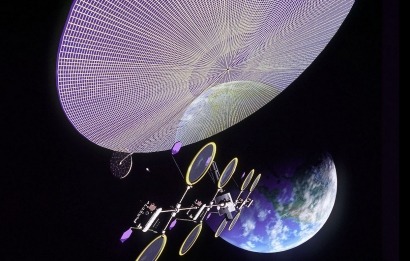
According to the Economic Times of India and China's Xinhua News Agency, the plan, which is still in its conceptual stages, calls for placing the solar power station in an orbit approximately 36,000 kilometres above the Earth. If China pulls it off, the floating solar farm would be the largest project ever undertaken in space.
Li Ming, vice president of the China Academy of Space Technology, told reporters that China plan to build and launch a space station by 2020, and that will "open an opportunity to develop space solar power technology.
Wang Xiji, a member of the Chinese Academy of Sciences, told the Xinhua News Agency that he believes building a solar space station is feasible, but cautioned that it would a monumental undertaking with many hurdles to overcome.
Researchers at the Academy of Sciences and the Chinese Academy of Engineering have long endorsed the idea of a space-based solar power station, and projected that such a facility could be in place by 2050.
The initiative is yet the latest indication that China is seriously trying to solve its massive pollution problems while providing safe, affordable energy to the world's largest population.
So far the scientists say the solar array itself will have to be huge -- more than five square kilometers -- and that the space station will need to be in a geosynchronous orbit -- an orbit matching the Earth's rotation period -- about 23 hours and 56 minutes -- in order to avoid nighttime disruptions and minimize the impact of overcast skies over the Earth.
And that's the easy part. Other questions that still have scientists scratching their head is exactly how to get the solar energy to the ground -- the current talk revolves around lasers or some kind of microwave -- and then, how to do all this in such a way to make it economically feasible.
In many their work known, Chinese researchers are joining a host of others scientists, notably in the United States in China, who are looking way up to the skies to solve the most fundamental energy question of the future -- how to power civilization.
In the US, NASA and the Department of Energy have been exploring the viability of space-based solar power for decades, and more recently, the Japan Aerospace Exploration Agency has proposed launching a solar collector into space by 2040.
For additional information:

